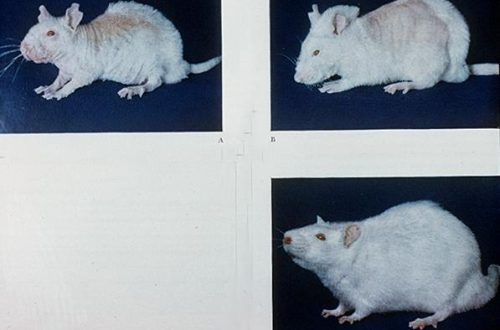
Cov kab mob hamster: cov tsos mob, kev kuaj mob thiab kev kho mob

Hamster diseases are often incurable. But for a loving owner, the short lifespan of a hamster is no reason to refuse him help. If a doctor who knows the symptoms and treatment of the main diseases of pets cannot be found, the owner should independently investigate this issue. All processes in the body of tiny animals proceed rapidly, so the theory is studied in advance in order to have an idea of what to do if the hamster is sick.
Diseases are divided into two groups: contagious and non-contagious. Their list is very extensive. But the symptoms can be similar in completely different diseases. The first task of the owner is to understand that something is wrong with the pet. A healthy animal is active, it has a good appetite. The coat is dry, thick, shiny and smooth, the eyes are clear and clean.
How to understand that a hamster is sick:
- appetite disorders: complete or partial refusal of food, selective eating of food, increased thirst;
- profuse salivation: wet hair on the chin, neck, chest;
- diarrhea: traces of feces around the anus, wet hair on the back half of the body;
- constipation: stools dry and hard or absent;
- kua muag los yog purulent tawm ntawm qhov muag;
- breathing problems: discharge from the nostrils, sniffling, wheezing;
- skin problems: dull coat, tangles, bald patches, wounds and peeling;
- oppression: the hamster has become lethargic and inactive, lies all the time;
- problems of the nervous system: convulsions, impaired coordination;
- unnatural formations on the body, swelling.
Any violation of the usual routine of life should be a cause for concern and close examination of the animal. The owner can understand if the hamster is sick much earlier than the veterinarian, because he is familiar with his habits and characteristics.
txheem
Infectious diseases in hamsters

These include bacterial and viral infections, parasites (external and internal), fungal diseases. Such problems are incomparably less common in rodents than non-contagious diseases. The carrier of the infection can be other rodents, humans, parasites, food and bedding (hay).
Some infections are very dangerous and lead to the death of the animal in 1-2 days, others can be transmitted to humans. Poorly imagining what hamsters are sick with, owners usually start to worry if the rodent has bitten one of the household members. Whether to worry is a moot point: rabies vaccinations are not given after a hamster bite, but the wound must be treated with an antiseptic and other diseases should be remembered.
Lymphocytic choriomeningitis
An extremely rare viral disease that is transmitted to humans. The source can be wild rodents – house mice. In adult hamsters, the disease is asymptomatic, and in young animals, damage to the respiratory system and conjunctivitis (rarely paralysis and convulsions) are observed. In humans, the virus affects the membranes of the brain, and in case of pregnancy it is extremely dangerous for the fetus. Related recommendations for choosing a hamster:
- do not buy a hamster at the bird market;
- to acquire a hamster over the age of 3 months;
- do not introduce new rodents during pregnancy.
Due to the particular danger of lymphocytic choriomeningitis, many are interested in whether hamsters should be vaccinated. Rodents are not vaccinated against this disease or any other. Bacterial infections can affect various body systems: the respiratory system, the gastrointestinal tract, and the genitourinary system.
Infectious gastroenteritis
“Wet tail disease” or wet tail is a common name for bacterial infections of the intestine, accompanied by profuse diarrhea. The cause of the disease in Syrian hamsters in this case will be a specific intracellular parasite Lawsonia intracellularis, and in dzhungaria – E. coli, Escherichia coli.
It is dehydration that causes the rapid death of the hamster, and there is almost no chance of recovery. Treatment is reduced to the use of antibiotics and fluid replacement in the body using subcutaneous injections. Prevention is the timely washing and disinfection of the cage, accessories, quarantine when buying new individuals and a careful choice of the place of purchase of the pet.
Another infection that causes severe diarrhea and death in hamsters is salmonellosis.
Cov kab mob ua pa
The herpes virus, influenza and many others can attack the hamster’s body, especially during stress or hypothermia, causing rhinitis (runny nose) and conjunctivitis. In a sick pet, it is easy to notice transparent discharges from the nose and eyes, the hamster sneezes and snorts, rubs its muzzle with its paws, whistles and sniffs when breathing.
Under good conditions of detention and care, the disease disappears in a few days. With reduced immunity, a bacterial infection joins a viral infection. The discharge becomes thick, yellow-green (pus), inflammation of the airways progresses to pneumonia.
With inflammation of the lungs, the animal experiences oxygen starvation: it is inactive, breathes heavily and with wheezing, the mucous membranes are pale. There is no appetite, the temperature rises. Death occurs in a few days. A type of bacterial pneumonia is diplococcal infection.
demodecosis
Of the external parasites, hamsters are most often attacked not by lice and fleas, but by microscopic mites that live in the layers of the skin. If the hamster is balding and itching, then most likely it is not an allergy, but demodicosis. Scabies in rodents is treatable with ivermectin injections.

Helminthic ntxeem tau
Like any pet, domestic hamsters can become infected with intestinal parasites. The most common are hymenolepidosis (tapeworms in the small intestine), and heterokidosis (roundworms in the caecum).
Endoparasites may not cause any overt clinical signs. It happens that a young hamster does not grow well. Periodic disorders of the stool are observed. There may be oily wool or other fur defects. An attentive owner notices that the hamster has lost weight, although the appetite is preserved.
Usually the owner is not aware of the presence of worms in the pet until he finds parasites in the feces. In this case, you can do without a visit to the veterinarian: complex preparations designed for rodents (suspension “Shustrik”) are convenient to use, they are quite safe.
Cov kab mob tsis sib kis

Such problems are usually caused by improper feeding and maintenance of animals. If the temperature regime is violated, the hamster is threatened with sun / heat stroke, or another extreme – hypothermia.
An unsuitable cage or wheel, walking around the apartment cause injuries. Joint keeping leads to wounds and abscesses if the animals fight.
The environment can be a source of stress, and hamsters also have allergies. Inappropriate diet causes dental pathologies, inflammation of the cheek pouches, diarrhea (enteritis). A hamster can be poisoned to death by products harmless to humans (almonds).
Elderly animals are at risk of oncology and a variety of metabolic disorders (diabetes, urolithiasis). Djungarians (of all ages) are especially prone to diabetes. You can read more about this in the article on the diseases of Djungarian hamsters.
It is believed that rodents have a stroke – a hemorrhage in the brain, but it is impossible to reliably determine this. Old hamsters have partial paralysis and other neurological diseases. If an older hamster is shaking and trembling, this is an alarming sign – convulsions are not related to the temperature in the room and may be a harbinger of an imminent death.
In a separate group, diseases of females and young animals associated with reproduction are distinguished: pyometra, pathological childbirth, toxicosis of pregnancy.
Indigestion disorder
With diarrhea, the fur around the anus is dirty, the hamster is lethargic, lies on its stomach. If the owner is sure that the liquid stool in the animal is associated with feeding, and not a bacterial infection, you can start treating the hamster at home. All supplies are removed from the pantry, and the pet is prescribed a strict diet – no succulent feed. Drink with an insulin syringe rice decoction, which has fixing properties, a decoction of chamomile. Well normalizes stool with diarrhea decoction of oak bark.
If during the day the pet does not get better, or there is a suspicion that the hamster has poisoned, you need to contact a veterinarian-ratologist.
Kab mob vwm
Due to bulging eyes, conjunctivitis is a very common disease in hamsters. Sometimes the eyelids are completely stuck together with pus. The owner should regularly wash the eyes with saline or an aqueous solution of furacilin, and then drip antibiotic eye drops (Floxal) 4 times a day.

Raug mob
In nature, hamsters live on the plains, so they are undeservedly considered extremely stupid animals: they are not at all afraid of heights, and when they fall, they often get injured and mutilated. An apartment is not a suitable environment for a pet to walk. And if, out of ignorance, two hamsters live in a cage at once, injuries cannot be avoided. The owner of the house should always have something to treat the wound to the hamster. An inexpensive and non-aggressive antiseptic for any skin damage and inflammation is chlorhexidine.
xaus
Information about what are the symptoms of diseases in rodents can help to identify malaise in time. If the hamster behaves strangely, this is already a reason to suspect something was wrong. In rodents, signs of the disease may not be obvious.
The sooner a sick hamster gets an appointment with a specialist, the more chances he has to get better. Do not ask how to cure a hamster and why he got sick on the Internet. Although experienced hamster breeders often answer on the forums, it will be much more useful to find out the contacts of a doctor who specializes in the treatment of rodents. Tiny animals get sick rapidly and often die. Even the best ratologist will not be able to resuscitate a hamster that has been sick for several days, and has already arrived at the reception in a state of agony.
Common hamster diseases
3.2 (63.08%) 39 votes





